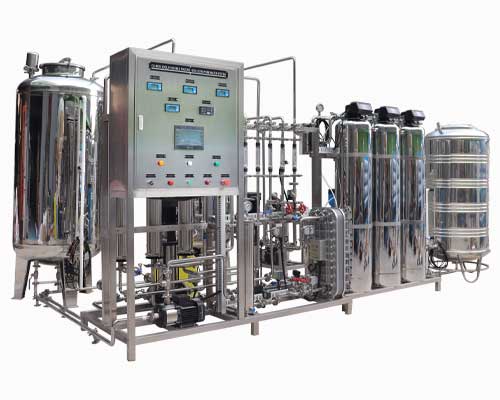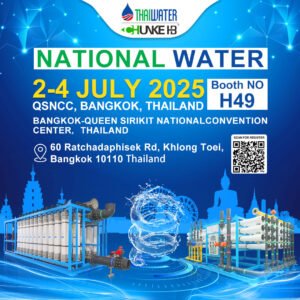Reverse Osmosis with Electrodeionization EDI










In the reverse osmosis with electrodeionization edi module systems: Electrodeionization (EDI) is used after reverse osmosis for polishing of demineralized water accordingly. To obtain low levels of conductivity and silica at last. So, in most of application, we prefer to use double pass reverse osmosis water purification system. Thus, the EDI uses ion exchange membranes, ion exchange resins and electricity. Hence, they produce high-quality water with no regeneration downtime. EDI is an alternative to a conventional mixed bed polisher.
What is the double pass reverse osmosis ro system?
In the reverse osmosis with electrodeionization systems, a Double Pass Reverse Osmosis (DPRO) System is when the permeate water going into a second RO unit to produce more pure water accordingly. Hence, a two or double stage RO is when the concentrate or reject stream is going into a second RO system to recover water, respectively. So, reverse osmosis system is briefly to purify water by rejecting around 99% of total dissolved solids from the feed water. Meanwhile, Single Pass RO Systems produce product water (permeate) and reject water (concentrate) at the same time. Therefore, most of reverse osmosis + EDI systems have double pass ro unit.

How does double pass ro system work? Working principle of double pass RO:
Double Pass Reverse Osmosis Systems are including of two RO systems (1st Pass and 2nd Pass) wherein the 1st pass has a bigger volumetric flow rate capacity than the 2nd pass accordingly. In between them, there can be a break tank. Where either permeate or the concentrate water of the 1st pass RO is stored and fed into the 2nd pass RO. Further filtration or directly from 1st ro permeate output connects to 2nd ro inlet accordingly.
In the reverse osmosis with electrodeionization edi system, pre-treatment can be neccessary firstly. To provide for both the 1st pass and the 2nd pass RO systems if the application will be water recovery. As the quality of the concentrate water on the 1st pass should be bordering on the saturation point. On the other hand, an application might only require a 1st pass pre-treatment. If it starts using as permeate to feed the 2nd pass.
Why a reverse osmosis with EDI module?
As regards to our experience, if inlet water to edi module is less than 20ppm. So, electrodeionization module efficiency and lifespan is much more better. For double pass reverse osmosis with electrodeionization EDI module, we prefer like some other well-known water treatment companies, Dow filmtec membranes, IonPure or GE EDI modules consequently.

